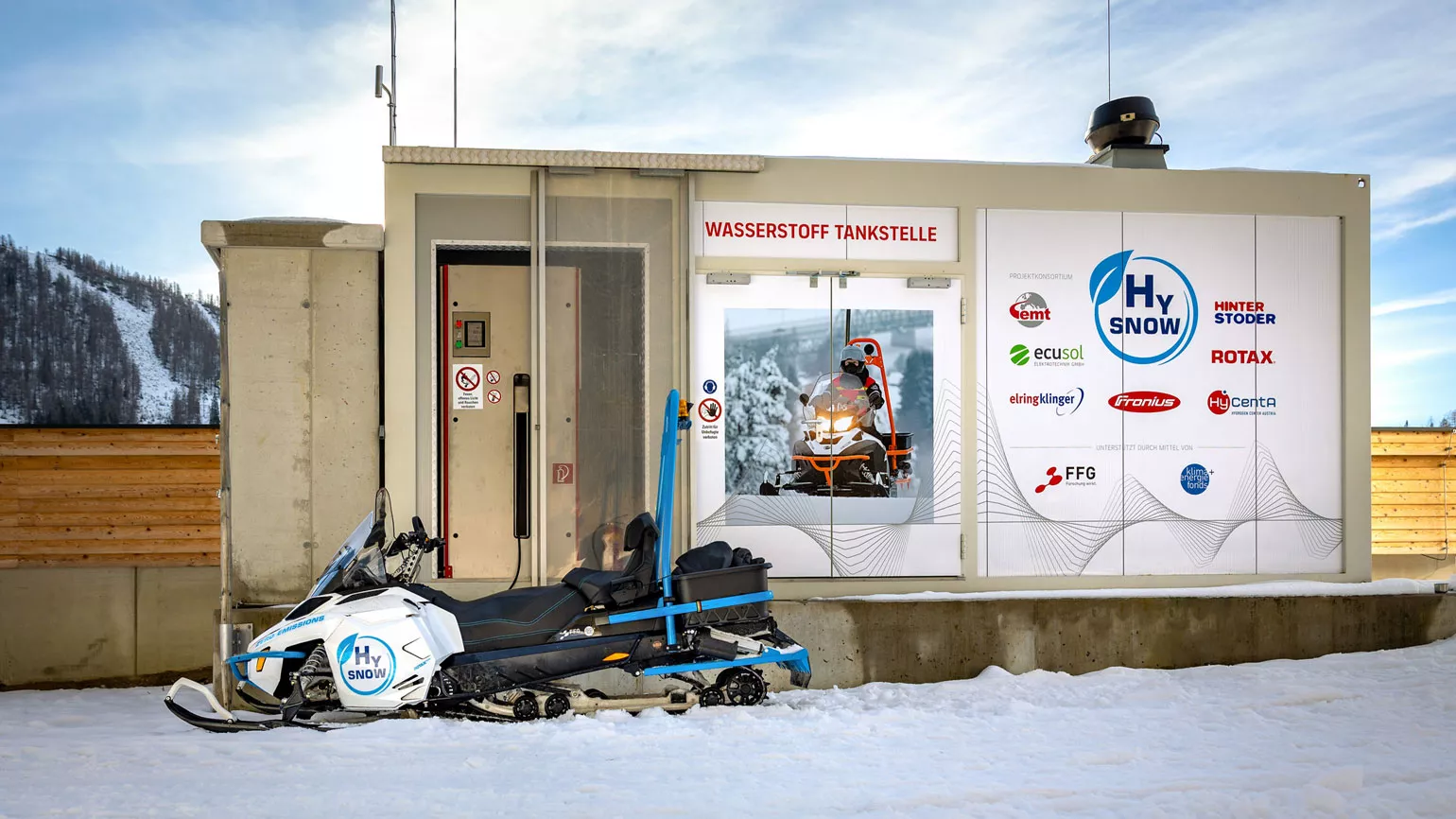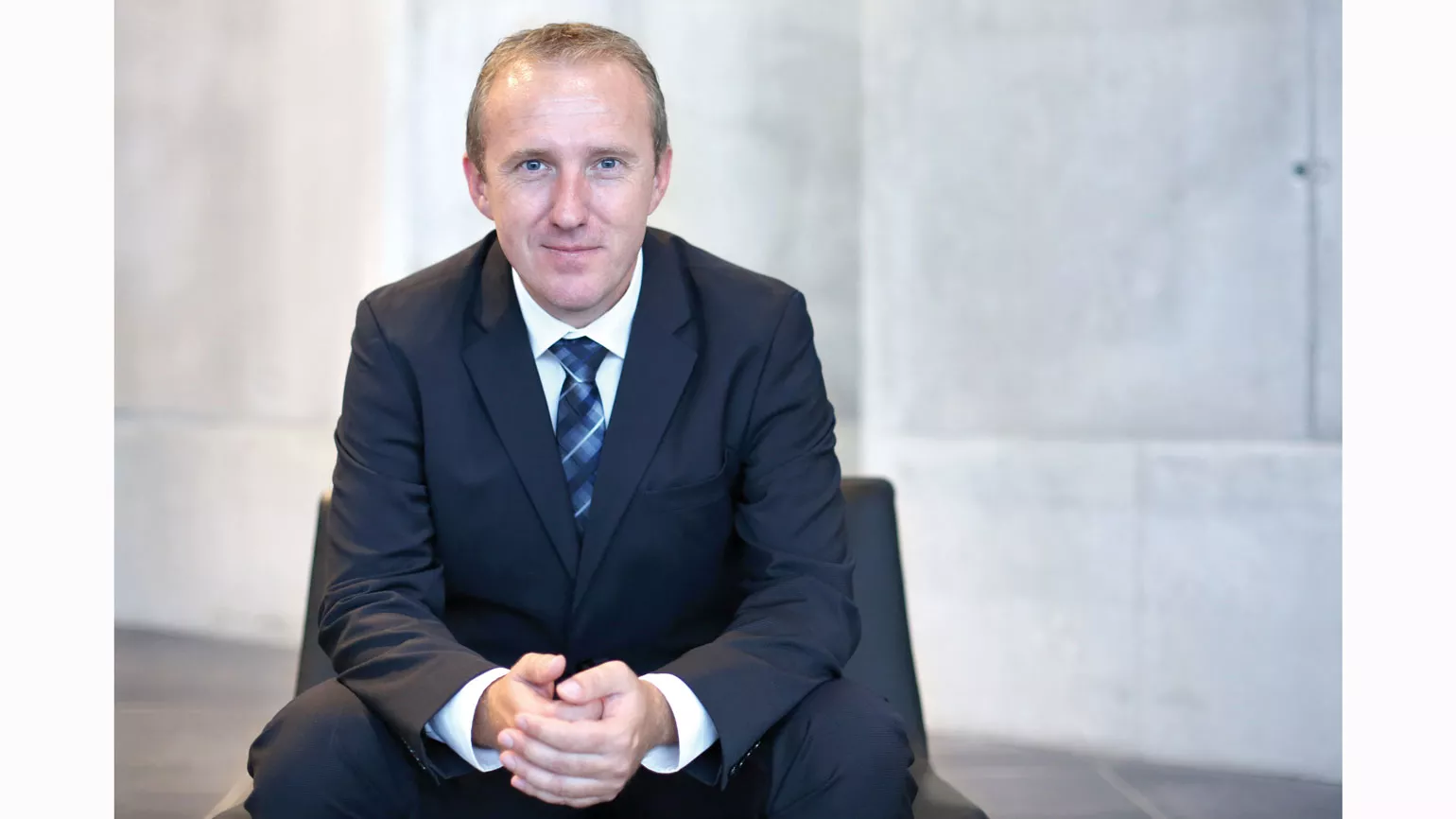3/18/2021
Product
Decarbonising winter tourism with hydrogen
The
flagship ‘HySnow’ project has been live for around a year. Since February, the
Rotax ‘Lynx HySnow’ snowmobile has also been undergoing testing in real-life
conditions in the Hinterstoder-Wurzeralm winter sports area in Upper Austria.
The snowmobile is supplied with green fuel by a Fronius-developed hydrogen
refuelling system. This represents a significant step towards the urgently
needed decarbonisation of winter tourism.

With around 20 years’ experience, Fronius is a pioneer in the use of
green hydrogen technology. “It will only
be possible to decarbonise mobility technology if the hydrogen is generated
using renewable energy,” insists Martin Hackl, Global Director Sales &
Marketing at Fronius International. “With
our Solhub1 system solution, we are pioneers and innovation
leaders in the decentralised generation, storage and use of green hydrogen. Only locally generated, green hydrogen can
utilise the full potentials of regional energy generation and save the effort
of transporting H2 in the process. We brought our know-how in this
area with us to the HySnow project.” In order to ensure the use of hydrogen fuel
cells remains sustainable across the board, the H2 refuelling system
uses photovoltaics to generate green hydrogen on site.
Fifty kilograms of hydrogen already produced
The H2 refuelling system consists of a 34.5-kWp PV system with two Fronius Symo inverters and two electrolysis modules with a downstream compressor. This provides a 350-bar tank infrastructure. The electrolysis modules have already produced 50 kg of hydrogen over the course of 300 operating hours. The Lynx HySnow has already been refuelled 30 times and is in use on the route between Hutterer Böden (1400 m) and Schafkogel (2000 m). The snowmobile emits only water vapour and moves in almost complete silence. The fuel cell system has now been in operation for 350 hours.
High CO2 savings potential
The key advantage of this sustainable hydrogen system is the generation of green hydrogen from solar energy using electrolysis. The rapid vehicle filling time of less than three minutes and the easy storage of large quantities of energy are further key advantages of the system. This guarantees a six-week hydrogen supply, even if the photovoltaic system is covered in snow.
Real-world implementation will take place over two winter seasons, with a saving of four tonnes of CO2 output achieved in comparison to vehicles with combustion engines. The system was designed and constructed by partners of the HySnow project consortium. Financial support for the flagship project is provided by the Austrian Federal Climate and Energy Fund.
Outlook
“The next step is to analyse the production data of the hydrogen refilling system,” explains Mathias Griesbaum, Project Manager at Fronius International GmbH. “We use this data to further develop the existing decentralised H2 refilling system and also to establish a clear requirement profile for future ‘Solhub’ system solutions.”
To encourage even more innovation from Austria, Fronius will, in future, be pooling all of its expert knowledge at its new high-tech Hydrogen Competence Centre in Steinhaus.
Strong partners
A total of seven strong partners are working on the HySnow project: BRP-Rotax GmbH & Co KG is the consortium leader of the four-year project with support from project partners Fronius International GmbH, HyCentA Research GmbH, the Institute of Electrical Measurement and Measurement Signal Processing (EMT) at TU Graz, Elring Klinger AG, ECuSoL GmbH, and Hinterstoder-Wurzeralm Bergbahnen AG.
1 The Fronius Solhub is a system solution for the local generation, storage and use of green hydrogen from solar energy.
Fifty kilograms of hydrogen already produced
The H2 refuelling system consists of a 34.5-kWp PV system with two Fronius Symo inverters and two electrolysis modules with a downstream compressor. This provides a 350-bar tank infrastructure. The electrolysis modules have already produced 50 kg of hydrogen over the course of 300 operating hours. The Lynx HySnow has already been refuelled 30 times and is in use on the route between Hutterer Böden (1400 m) and Schafkogel (2000 m). The snowmobile emits only water vapour and moves in almost complete silence. The fuel cell system has now been in operation for 350 hours.
High CO2 savings potential
The key advantage of this sustainable hydrogen system is the generation of green hydrogen from solar energy using electrolysis. The rapid vehicle filling time of less than three minutes and the easy storage of large quantities of energy are further key advantages of the system. This guarantees a six-week hydrogen supply, even if the photovoltaic system is covered in snow.
Real-world implementation will take place over two winter seasons, with a saving of four tonnes of CO2 output achieved in comparison to vehicles with combustion engines. The system was designed and constructed by partners of the HySnow project consortium. Financial support for the flagship project is provided by the Austrian Federal Climate and Energy Fund.
Outlook
“The next step is to analyse the production data of the hydrogen refilling system,” explains Mathias Griesbaum, Project Manager at Fronius International GmbH. “We use this data to further develop the existing decentralised H2 refilling system and also to establish a clear requirement profile for future ‘Solhub’ system solutions.”
To encourage even more innovation from Austria, Fronius will, in future, be pooling all of its expert knowledge at its new high-tech Hydrogen Competence Centre in Steinhaus.
Strong partners
A total of seven strong partners are working on the HySnow project: BRP-Rotax GmbH & Co KG is the consortium leader of the four-year project with support from project partners Fronius International GmbH, HyCentA Research GmbH, the Institute of Electrical Measurement and Measurement Signal Processing (EMT) at TU Graz, Elring Klinger AG, ECuSoL GmbH, and Hinterstoder-Wurzeralm Bergbahnen AG.
1 The Fronius Solhub is a system solution for the local generation, storage and use of green hydrogen from solar energy.


